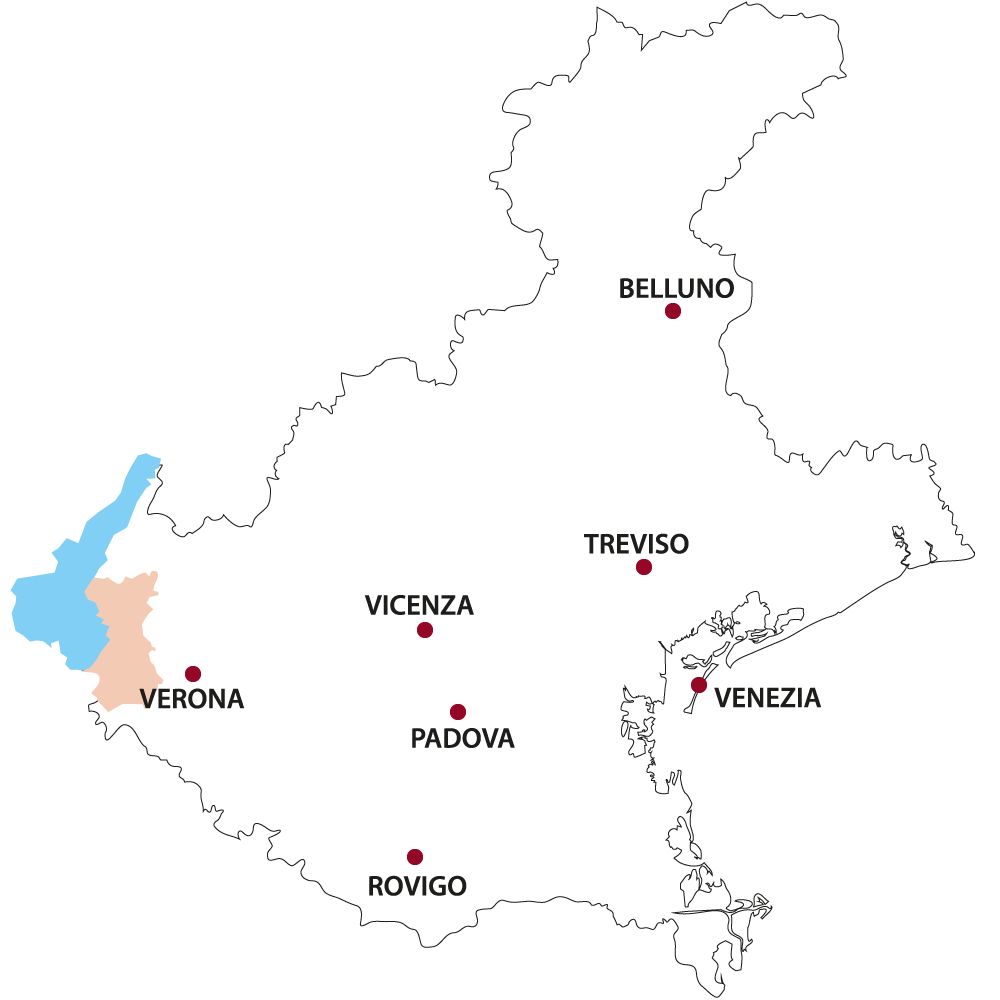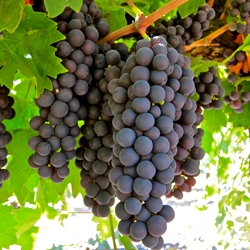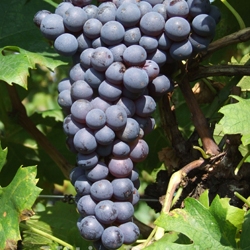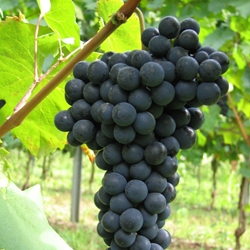

Zona di produzione
homeland, especially the Corvina Veronese, or the Rondinella, the Molinara, and many others. The happy combination of morainic soils, the vines, and a particularly mild climate characterised by good thermal excursions between day and night, produce wines that both in the traditional red version and in the Chiaretto rosé, are a considerable and immediate pleasure to drink. The production area includes the entire territory of the municipalities of Garda, Bardolino, Affi, Bardolino is the child of the morainic hills on the eastern shore of Lake Garda, formed by glaciers which modelled the lake basin in remote ages, leaving clear tracks of themselves in a series of reliefs overlooking the lake, and equipped with extremely varied soils (suffice it to say that the Consortium of Protection has identified more than sixty different soil types, often of a gravelly nature). Here for a very long time the vines typical of the territory of Verona have had their chosen Cavaion Veronese, Pastrengo, Lazise, Castelnuovo del Garda, and part of the municipal i t ies of Tor ri del Benaco, Costermano, Caprino Veronese, Rivoli Veronese, Bussolengo, Sona, Peschiera del Garda, Sommacampagna, and Valeggio sul Mincio. The use of the additional specification “Classico” is reserved for the wine produced from grapes harvested and vinified within the most ancient area of origin. The Consortium of Protection of Bardolino was one of the first wine Consortiums active in Italy: it was established in 1969, just a year after the D.O.C. had adopted Bardolino wine (on May 28th 1968).
Caratteristiche e tipologie vino
Despite the different production approaches, having the same grapes (Corvina and Rondinella especially), the Bardolino and the Chiaretto have common characteristics such as their fruity fragrance and light palate, and are rightly appreciated for their strong versatility in the kitchen and their considerably easy drinkability. Bardolino is a brilliant ruby red colour, fruity and fragrantly aromatic, with hints of cherry, morello cherry, strawberry, raspberry, redcurrant, blackberry and elegant hints of spices (cinnamon, clove, black pepper). The taste is dry and mellow, characterised by the same sensations, and scents of small crisp red fruit, spiced, balanced, fresh, and considerably drinkable. Bardolino Superiore D.O.C.G. has an ageing period of at least one year from the 1st of November of the year of production. Chiaretto is the rose’ version of Bardolino: it is obtained with the “pink” vinification of grapes, i.e. with a minimum maceration of the skins, which thus gives the grapes only part of their natural colourants. From this comes the characteristic brilliant pink, sometimes tending to cherry, and also defined with the poetic terms “pink peach flower” or “coral pink”. Its bouquet draws delicate fragrances reminiscent of small forest fruits (raspberry, blackcurrant, blueberry, wild strawberry), crisp apple, wild flowers, accompanied by light and refreshing scents of chlorophyll and sour apple and by thin veins of spices (cinnamon, clove, vanilla). On the palate the Chiaretto delivers in full its juicy sensations of small red fruit, combined with an enviable youthful freshness. The Spumante version is obtained by methods of natural fermentation. The Bardolino Novello is marketed from the 6th of November of the year of harvest of the grapes. Obtained by the method of carbonic maceration of the grapes, which was conceived in France, it has an elegant and lively medium intense ruby colour, a distinctly fruity aroma and a fresh delicately velvet full-flavoured taste. With regard to combinations, Bardolino, besides being a wine for the whole meal, is therefore very suitable for pasta, ravioli, risotto, soups, grilled and roasted meats; allowing intriguing juxtapositions with dishes based on chestnuts or mushrooms. On Lake Garda, Bardolino is always drunk with fish from the lake: it is excellent, for example, with tench or grilled eel risotto. Traditionally it also accompanies a typical Veneto dish based on fish: polenta and baccalà (salt cod). Served fresh, it combines very well with fish and seafood, especially of large size, but also with stewed cuttlefish. Chiaretto is ideal on its own as an aperitif, or served together with appetizers, pasta, and Italian summer dishes. A curious combination is with dishes based on Scorzone (summer black truffles). It is excellent with fish, both sea and lake, either cooked (grilled, baked, salted, boiled) or raw (fish carpaccio). Try it with paella, or with sautéed clams, or even with crustaceans. It fits in very well with oriental cuisine, even spicy dishes, and is the ideal companion for sushi.
Grapes
-

CORVINA
-

RONDINELLA
-

MOLINARA
The wines of the D.O.C. Bardolino are obtained from historic native vines. In terms of grapes, the main part is played by Corvina Veronese, with a small quantity that can be replaced by the Corvinone variety. Rondinella is admitted between 10% and 40%. In modest quantities (never exceeding 10-15%), vines such as Molinara, Rossignola, Barbera, Sangiovese and others may be included in production. The Corvina is the classic autochthones grape of Valpolicella and Bardolino. We do not know its origins, but they are ancient: the first record of its cultivation in Valpolicella date back to 1824 by the Pollini family. Corvina Veronese is a variety that has mid-term budding and middle to late ripening. It is vigorous and constantly productive due to a fortunate fertility of the buds and to a fairly consistent average bunch weight. It resists cold winters without particular difficulty, although it is sensitive to mildew, botrytis, powdery mildew and rotting acid. It prefers long pruning in its different forms of cultivation. If vinified in purity, Corvina gives a wine of fairly intense ruby red colour with violet reflections and fresh scents, quite full-bodied and with a slightly tannic acidic taste. Of unknown origins, Corvinone has always been confused with the Corvina Veronese Grossa until 1993, the year of its entry in the Register of varieties. In terms of phenological characteristics the Corvinone does not differ substantially from Corvina; it is, in fact, a vine of mid-term budding and medium-late ripening. It is highly vigorous, therefore it is suited to expanded farming methods; it has good productivity due to its large sized bunches and the good fertility of its buds. It is sensitive to the desiccation of the spine, botrytis, rotting acid, and especially to mildew. The Rondinella is widespread in the areas of Valpolicella and Bardolino where the wines produced with its vines are classified both as D.O.C and D.O.C.G.. Of an unknown origin, it probably arrived in the Verona area in the 19th century. The name seems to derive from the colour of the berry, which resembles the livery of the swallows’ plumage. It is a vigorous vine, with mid-term budding and medium-late ripening. The fertility of the buds is relatively high, and together with its good average bunch weight, it ensures constant and abundant production. It is suitable for different types of expanded farming methods ideally with rich medium-long pruning. It has a high tolerance to the main cryptogams, with the exception of apoplexy. It has good resistance to drought and ferric chlorosis. The wine that is obtained is less robust than that of Corvina, with a less intense ruby colour, a floral aroma, and has a slightly vinous dry taste. The first mention of the Molinara grape variety being grown in the lower Veronese plain dates back to Pollini (1824). Currently it is reared mainly in the Garda and in the surrounding morainic areas. It has mid-term budding, with medium-late ripening. The relatively average fertility of the buds, and the medium low weight of its grape bunches lead to a medium scale production. Of quite high vigour, it is suited to expanded forms of cultivation (referred to as “pergola veronese”). It is very sensitive to excess moisture and potassium deficiencies; it has good tolerance to powdery mildew, downy mildew, though less tolerance to botrytis and rotting acid. The wine that is derived from this grape taken in purity is pale pink, both quite acidic and high in alcohol. 36 Bardolino D.O.C
Wines
BARDOLINO SUPERIORE D.O.C.G. E BARDOLINO SUPERIORE CLASSICO D.O.C.G.
Colour: ruby red, tending to garnet with aging
Bouquet: fruity, spicy;
Taste: dry, slightly bitter, well-balanced, sometimes characterised by a slight hint of wood
Alcoholic Strength minimum total volume: 12% vol.;
Accompaniments: cold meats, red meats, light game
BARDOLINO E BARDOLINO CLASSICO D.O.C.
Colour: ruby red sometimes tending to cerasuolo (a typical colour of young red wines) that turns garnet with aging;
Bouquet: characteristic with a light delicate aroma
Taste: dry, pungent, slightly bitter, well-balanced, subtle, sometimes slightly semi-sparkling and lively;
Alcoholic Strength minimum total volume: 10,50%
Accompaniments: wine for all courses, especially white meats, light game.
BARDOLINO CHIARETTO E BARDOLINO CHIARETTO CLASSICO D.O.C.
Colour: pink tending to garnet with aging
Bouquet: characteristically fruity with a slight delicate aroma;
Taste: mellow, pungent, slightly bit ter, sometimes slightly lively
Alcoholic Strength minimum total volume: 10,50%
Accompaniments: light hors doeuvres, all types of salt and fresh water fish, cheeses
BARDOLINO CHIARETTO SPUMANTE D.O.C.
Colour: pink tending to garnet with aging
Bouquet: vinous characteristic with a slight delicate aroma;
Taste: mellow, pungent, slightly acidic
Alcoholic Strength minimum total volume: 11,50%
Accompaniments: aperitif, light hors doeuvres, fish, fish from the lake.
BARDOLINO NOVELLO E BARDOLINO NOVELLO CLASSICO D.O.C.
Colour: light ruby red
Bouquet: characteristic, intense, fruity
Taste: dry, mellow, pungent, slightly acidic, fresh, sometimes slightly semi-sparkling lively
Alcoholic Strength minimum total volume: 11,00%
Accompaniments: risotto, white and red meats.

